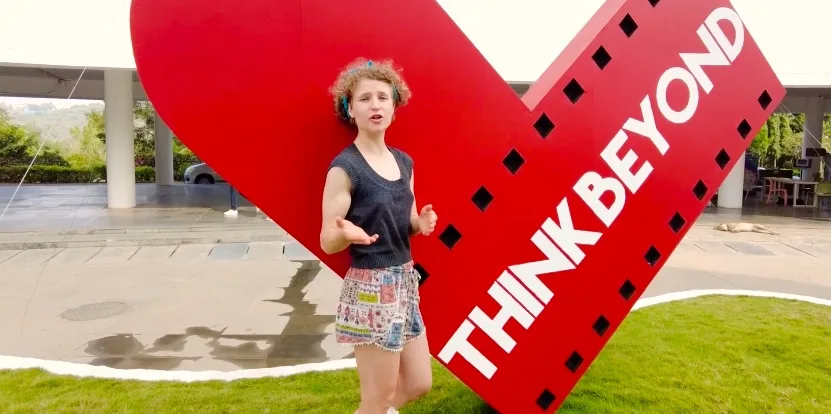“Stop – the hair”. The director is sitting in front of two screens just around the corner of the set so that he can observe everything without being in the way of the camera. I am currently witnessing behind the scenes how a new episode of a popular Indian TV series is produced. I make an observation that is definitely not dependent on the location: everywhere I have collected film experience so far, it takes forever to get a shot that satisfies the actors, the directors and camera operators at the same time. Repetition and starting the scenes over and over at random spots, sometimes in the middle of a sentence, is necessary.
What differs however, are the various working practices regarding sustainability measures on set. “We work together with a Canadian agency with a lot of experience in making the big studios in North America sustainable” says the founder of the initiative Green-Set, Anupama Mandloi. Within this initiative, she is responsible behind the scenes of many Indian movies, to decrease the CO2e-footprint and switch towards more sustainable behaviour.

From refill bottles to vegetarian local catering; LEDs and reused costumes… there are a lot of measures that can and should be taken. All of these and many more are discussed in my documentary: Lights of Change: Sustainable Bollywood. I exchanged with industry leaders, current film students, the president of the film and media school Whistling Woods, costume designers and many more who work directly in the Indian film industry.

The conclusion: there are a lot of great ideas and some practices are already well established. But what will finally have a real impact would be a change in the big famous studios. This can be achieved by governmental regulations, activism by the filmmakers themselves demanding for environmental practices as well as you as spectator selecting your movies depending on its sustainable friendliness and being inspired by sustainably behaving stars.
It was a great experience learning about sustainable initiatives in India’s filmmaking industry comparing it to other organisations and initiatives in the Western world and getting in touch with cooperation partners for the future. And … maybe it inspires all of you to be more aware of sustainable films next time you take your snacks to a watchparty on your coach or the next-door cinema.

